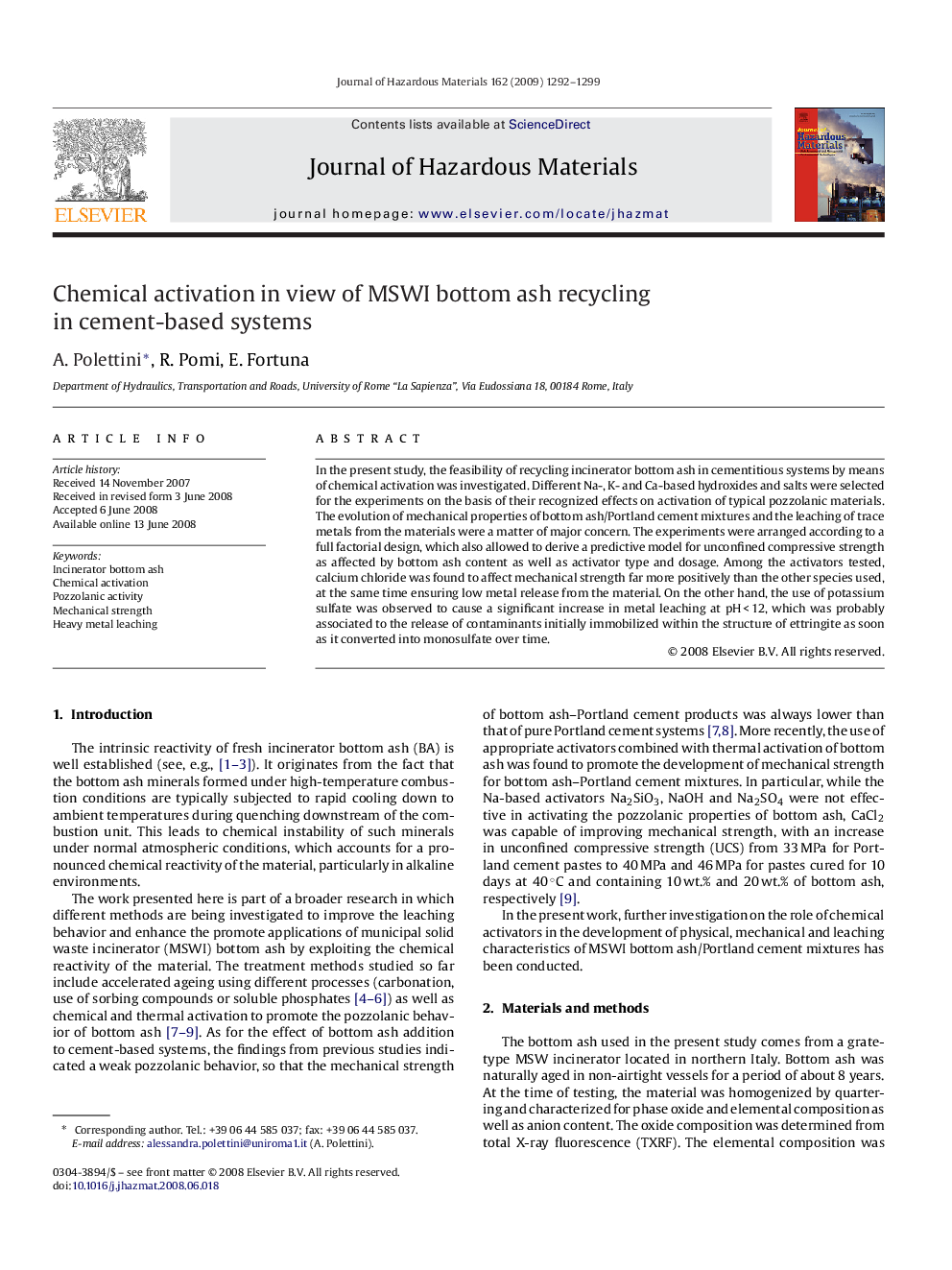| Article ID | Journal | Published Year | Pages | File Type |
|---|---|---|---|---|
| 582436 | Journal of Hazardous Materials | 2009 | 8 Pages |
Abstract
In the present study, the feasibility of recycling incinerator bottom ash in cementitious systems by means of chemical activation was investigated. Different Na-, K- and Ca-based hydroxides and salts were selected for the experiments on the basis of their recognized effects on activation of typical pozzolanic materials. The evolution of mechanical properties of bottom ash/Portland cement mixtures and the leaching of trace metals from the materials were a matter of major concern. The experiments were arranged according to a full factorial design, which also allowed to derive a predictive model for unconfined compressive strength as affected by bottom ash content as well as activator type and dosage. Among the activators tested, calcium chloride was found to affect mechanical strength far more positively than the other species used, at the same time ensuring low metal release from the material. On the other hand, the use of potassium sulfate was observed to cause a significant increase in metal leaching at pHÂ <Â 12, which was probably associated to the release of contaminants initially immobilized within the structure of ettringite as soon as it converted into monosulfate over time.
Keywords
Related Topics
Physical Sciences and Engineering
Chemical Engineering
Chemical Health and Safety
Authors
A. Polettini, R. Pomi, E. Fortuna,
